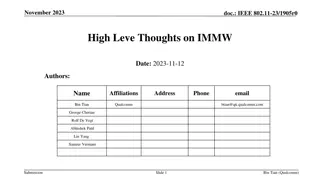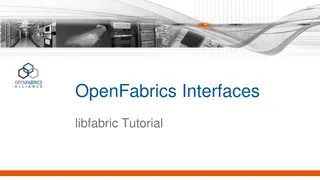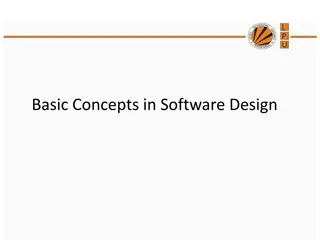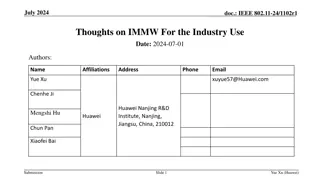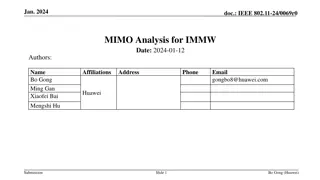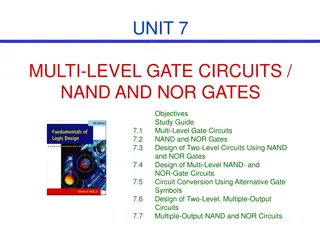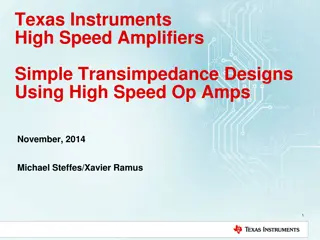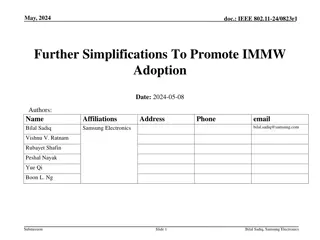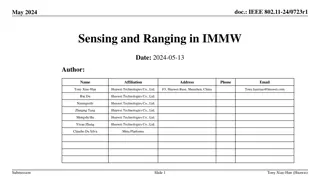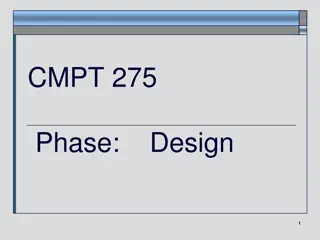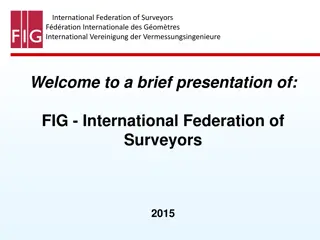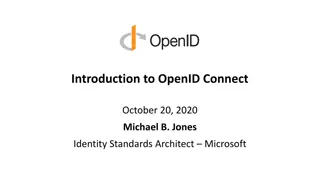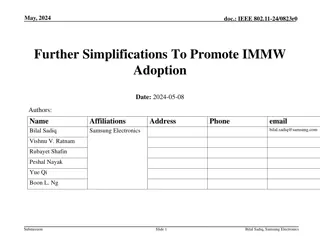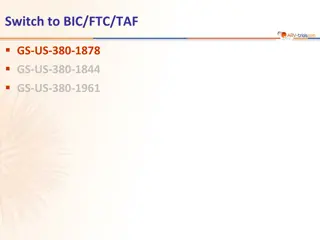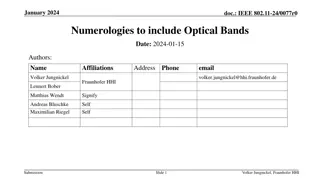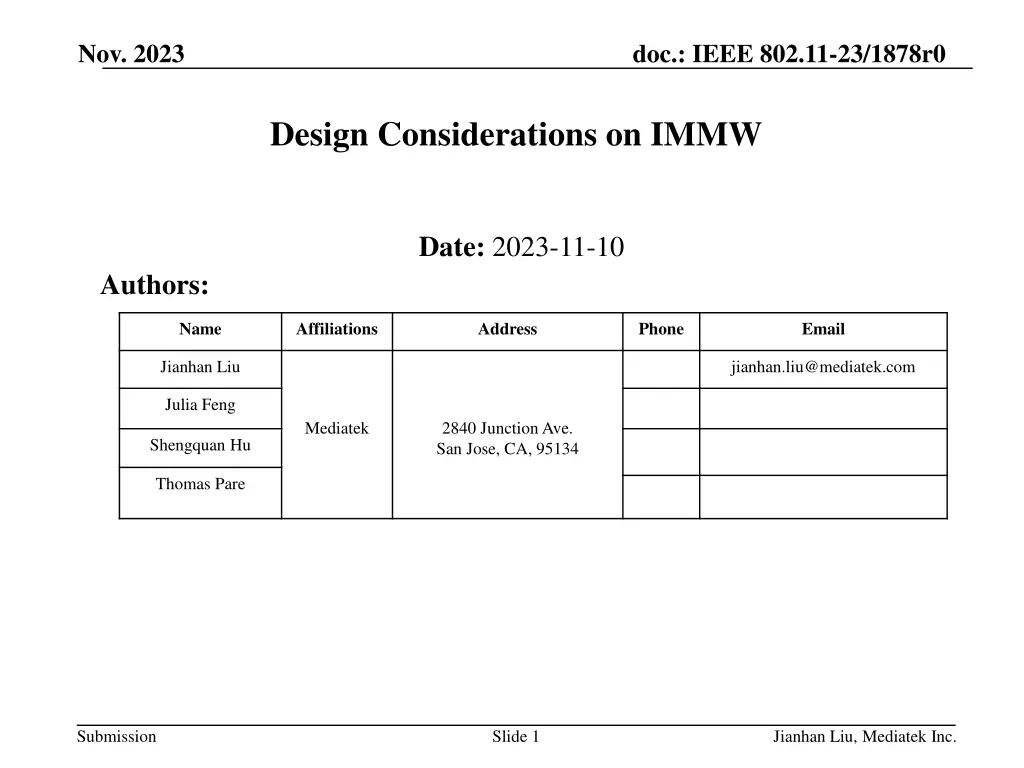
Design Considerations for IEEE 802.11-23 IMMW Technology
Explore the design considerations outlined in the IEEE 802.11-23/1878r0 document focusing on IMMW technology. The document delves into the range targets, channel bandwidth, channelization strategies, and subcarrier spacing recommendations for enabling high-rate short-range communications in the sub-7GHz and mmWave bands. Key points include the importance of line-of-sight communications, bandwidth requirements, and alignment considerations with existing standards.
Download Presentation

Please find below an Image/Link to download the presentation.
The content on the website is provided AS IS for your information and personal use only. It may not be sold, licensed, or shared on other websites without obtaining consent from the author. If you encounter any issues during the download, it is possible that the publisher has removed the file from their server.
You are allowed to download the files provided on this website for personal or commercial use, subject to the condition that they are used lawfully. All files are the property of their respective owners.
The content on the website is provided AS IS for your information and personal use only. It may not be sold, licensed, or shared on other websites without obtaining consent from the author.
E N D
Presentation Transcript
Nov. 2023 doc.: IEEE 802.11-23/1878r0 Design Considerations on IMMW Date: 2023-11-10 Authors: Name Affiliations Address Phone Email Jianhan Liu jianhan.liu@mediatek.com Julia Feng Mediatek 2840 Junction Ave. San Jose, CA, 95134 Shengquan Hu Thomas Pare Submission Slide 1 Jianhan Liu, Mediatek Inc.
Nov. 2023 doc.: IEEE 802.11-23/1878r0 Design range target IMMW targets to enable high-rate short-range communications via assistance or coordination of links on sub-7GHz bands. Longer range needs large number of antennas and therefore increases the cost of IMMW products. mmWave signals experience significant path loss when penetrating walls or other objects and mmWave signals can be easily blocked. IMMW group should focus on enabling line of sight (LOS) communications. We recommend the design range targe should be 5-10m in LOS. Submission Slide 2 Jianhan Liu, Mediatek Inc.
Nov. 2023 doc.: IEEE 802.11-23/1878r0 Channel Bandwidth IEEE 802.11ax/be can support maximum bandwidth 320MHz in one link. 60GHz has multi-Giga Hz bandwidth available. IMMW should targets for higher data rate communications to gain market traction. We suggest the base bandwidth of IMMW should be greater or equal to 320MHz. Multiple channel bandwidth can be supported, for example, 320MHz, 320*2=640MHz, 320*4=1280MHz and 320*8=2560MHz. Submission Slide 3 Jianhan Liu, Mediatek Inc.
Nov. 2023 doc.: IEEE 802.11-23/1878r0 Channelization (1) We can align IMMW channelization with 11ad/11ay channelization Each 320 MHz channel is within a 360MHz frequency subblock. BW= 1280MHz BW= 960MHz BW= 640MHz index0 8 11 12 4 1 2 3 5 6 7 9 10 BW= 320MHz Channel starting Frequency =56.16GHz Frequency F =180MHz Channel spacing =360MHz Within one 2.16GHz channel (2160MHz=6*360MHz) Submission Slide 4 Jianhan Liu, Mediatek Inc.
Nov. 2023 doc.: IEEE 802.11-23/1878r0 Channelization (2) To achieve higher spectrum utilization, we can choose to not align IMMW channelization with 11ad/11ay channelization We can have consecutive non-overlapping 320MHz, 640MHz, 1280MHz and 2560MHz channels or just overlapping the large channels with 640MHz. BW= 2560MHz BW= 1280MHz BW= 640MHz index0 BW= 320MHz Channel starting Frequency =56.16GHz Frequency Channel spacing =320MHz Within one 2.16GHz channel (2560MHz=8*320MHz) Submission Slide 5 Jianhan Liu, Mediatek Inc.
Nov. 2023 doc.: IEEE 802.11-23/1878r0 On Subcarrier Spacing Due to large phase noise, large subcarrier spacing should be used in IMMW. 11ad/ay (60GHz) 3GPP (60GHz) 11ax/be (Sub-7GHz) 120/240KHz for FR2, by Rel.15~16 480/960kHz for FR2-2, by Rel.17 78.125kHz Subcarrier Spacing 5.15625MHz We can have the fixed subcarrier spacing for different channel bandwidths (like IEEE 802.11 standards) For example, the subcarrier spacing can be 78.125*2^5=2.5MHz We can also introduce scalable subcarrier spacing (like 3GPP) For example, subcarrier spcating can be 78.125*2^n, n=4, 5, Submission Slide 6 Jianhan Liu, Mediatek Inc.
Nov. 2023 doc.: IEEE 802.11-23/1878r0 Supported Data Rates Minimum data rate is associated with base channel bandwidth and the lowest MCS. For reasonable power efficiency of IMMW, we think the minimum data rate should be higher than 100Mbps. Maximum data rate is associated with the largest channel bandwidth, the maximum number of spatial streams and the highest MCS. To reduce the complexity, we recommend the number of spatial streams are 2 or 4 and the highest modulation should be 256QAM or 1KQAM. Submission Slide 7 Jianhan Liu, Mediatek Inc.
Nov. 2023 doc.: IEEE 802.11-23/1878r0 Summary We present general thoughts on designs target, channel bandwidth, numerology and supported data rates. Submission Slide 8 Jianhan Liu, Mediatek Inc.

